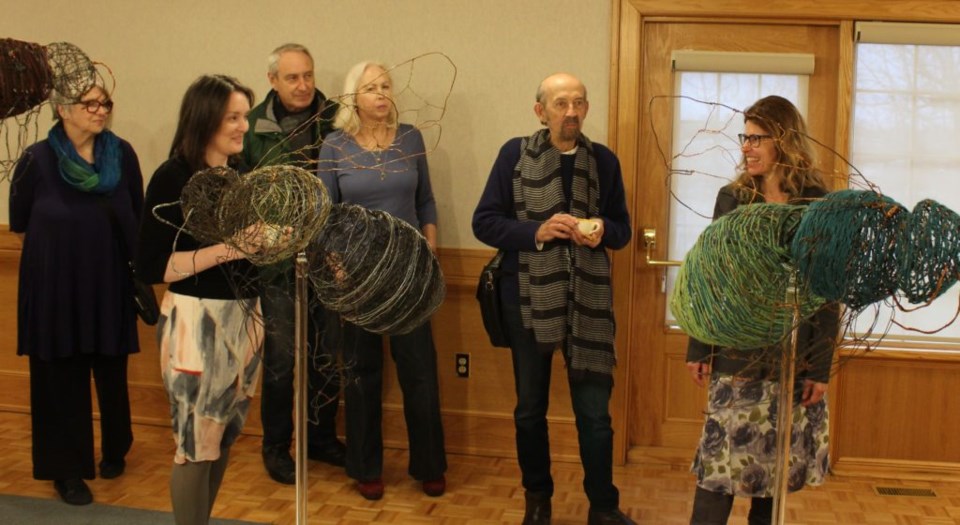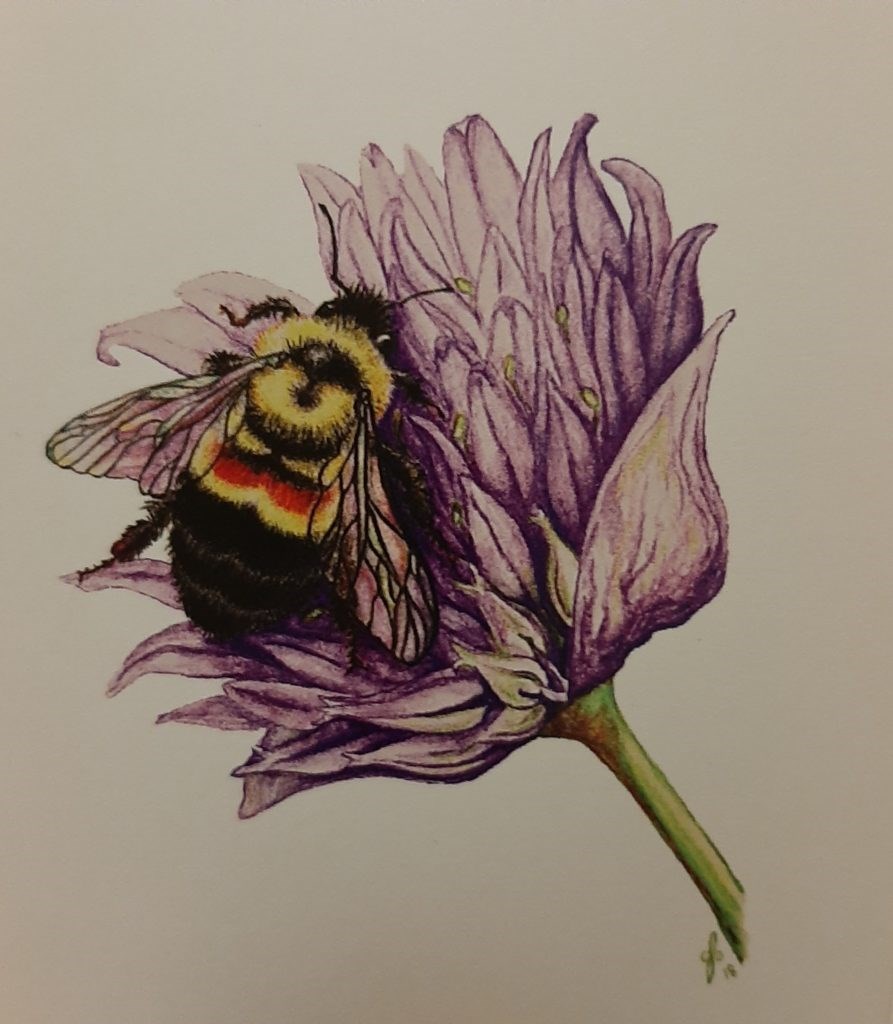
Although honey bees are not native to Canada, they are critical to our food supply, beekeeper Joanna Paul told an attentive audience at the RiverBrink Art Museum in Queenston Saturday.
Paul, who holds a graduate certificate of commercial beekeeping from Niagara College, spoke of the plight of bees and pollinators in our region, demonstrating the importance of these creatures to our food system and environment and suggesting how individuals can help support these fascinating creatures.
Paul said that honey bees were introduced by European settlers for the pollination of crops and honey production, and explained the anatomy of the honey bee, the roles with the hive and the structure of their colonies.
With this introduction to the world of bees, Paul then concentrated on the bees that are native to North America. In Canada, she said, there are up to 1000 species of bees that have been identified, over 400 species in Ontario alone. “That in itself means we have a great responsibility to really take care and help these populations.”
The majority of these bees are solitary, and do not live in a hive structure like their European cousins. Many are about the size of an ant, and 80 per cent of these bees nest in the soil, she said, pointing out that many of us will go through our lives without ever noticing them.
Native bees are separated into seven families, she said, explaining unique habits of each and revealing interesting details of their existence. Each of the families of bees that she mentioned are represented in sculpture in the exhibition room adjacent to the lecture hall.
One of the most recognizable of our native bees – the bumble bee — is a very important pollinator, especially for tomatoes. Paul explained that bumble bees are specifically adapted to release the pollen from the tomato flower, changing the frequency of the vibration of their wings to “shake” the pollen from the flower. This “buzz pollination” takes place at the frequency C Major, she said, demonstrating the frequency with a tuning fork so the audience could hear the tone of the buzz pollination.
Paul introduced the audience to the rusty-patched bumble bee which is critically endangered. This once common bee has not been seen since 2012, and is of particular interest to Paul, who is so moved by its plight she used her skills as an artist to create a watercolour painting of it. She distributed greeting cards with a copy of the painting on them, information about the bee and links on how to help support the declining bee population, combining her Bachelors of Fine Arts honours degree from York University in design and biological illustration with her love for these diverse pollinators.
Paul also spoke about why bees are declining, and how individuals can help save the pollinators. She suggested three ways individuals can support pollinators: first, by growing a variety of regional native plants that flower at different times throughout the season, leaving patches of soil mulch-free for bees that nest in the ground.
She reminded the audience to avoid pesticides, and to be patient with caterpillars on plants, because they will eventually become butterflies, also great pollinators.
Second, Paul suggested buying organic whenever possible, because not only is it healthier for people, it is healthier for the environment. She also encouraged support of locally grown food and to support local beekeepers.
“Although honey bees are not native to Canada, they are still critical to our food system, and native bees can be great pollinators, but they are not on the same scale as honey bees. We still rely on a large population of honey bees.”
And third, by our actions. She urged joining an organization or project in the area, and writing to all levels of government to show concern for pollinators.
“Share the wonder of these remarkable creatures with your friends and neighbours, because I think even today, if all of you can remember maybe just one fact and when you go home, tell someone, then I will have done my job today.”
The bee exhibition is still on display in the upper floor exhibition hall at the RiverBrink Art Museum. Some important links provided by Paul on this subject are Bumble Bee Watch – bumblebeewatch.org or foecanada.org, and her own project, Niagara Junior Beekeepers – jrbeekeepers.ca. She can be reached at [email protected].



